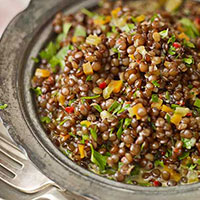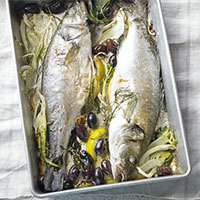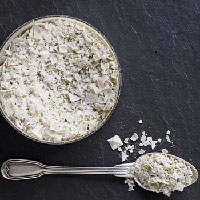Top 10 Tips for a Healthy Heart

Eating to keep your heart healthy needn’t mean a complete lifestyle change. A few simple swaps can make all the difference …
1Take it down a notch. Using low-fat milk instead of whole milk will reduce your saturated fat intake, which in turn can help to lower your cholesterol levels. It might seem like a small change but, because milk is an everyday food, it can add up and make a big difference to your overall diet. If you already use semi-skimmed milk but are reluctant to use skimmed, give 1% milk a go..

2Bigger isn’t always better. Use measuring spoons to help with portion control and don’t always go for the biggest when it comes to choosing individually portioned foods. These little choices can really add up: we know that by choosing the smallest bagel at breakfast rather than the largest each day you could save enough calories over a year to mean you lose 2½ kilograms.

3Dear Diary. It can be easy to forget the snacks we have between meals and wonder why the weight is creeping on. Writing down what you eat over the day can help remind you of the extras you’ve had and can also help you keep track of positive things like whether you are getting your 5-a-day.

4Lean isn’t always mean. Choosing lean meat and removing skin and visible fat is a great way to reduce the saturated fat content of your meals. If you’re using meats where the fat is difficult to remove, like mince, then choose the leanest version you can and then skim any excess that rises to the top during cooking.

5Think Mediterranean. An easy switch to start off with is looking at the oils and spreads you use in your cooking. A Mediterranean diet rich in fruit, veg, fish and pulses and using unsaturated oils like olive, rapeseed and sunflower rather than saturated fats like butter or lard might not be low in fat overall but the type of fats are better for your heart.

6Get Fruity. Eating at least five portions of fruit and vegetables each day is linked to a lower risk of heart disease. If you find it difficult to eat fresh produce, remember that there are five ways you can get your 5-a-day: fresh, frozen, tinned, dried and juiced. But don’t get carried away with the juicer – juices only count once a day, however much you have. The process of juicing also exposes the natural sugars in the fruit, which may be detrimental for your teeth – so if possible, enjoy your juice with a meal to minimise damage.

7Full of Beans. Try making a vegetarian meal during the week for a lighter choice. Beans are a great way to fill you up and a portion will count as one of your 5-a-day. Even if you are still making a meat dish, why not add some beans and lentils to it? It will mean you need less meat, which will lower the saturated fat content, but still have plenty of savoury flavour.

8Cooking Counts. When you’ve spent time sourcing healthy, seasonal ingredients for your dishes, use healthy cooking methods to show them at their best. Grill or bake fish and meat and have vegetables baked, boiled or steamed to go alongside. If you are going for a pasta dish, make a tomato rather than cream-based sauce for a heart healthy option.

9Halt the Salt. On average in the UK, we eat more than the recommended maximum of 6g a day. Cutting down on salt is important to help to avoid high blood pressure. But that doesn’t mean your food has to be bland – you can still pack your meals with taste without adding salt. Try adding herbs and spices, pepper, chilli or citrus instead.

10Be Label Savvy. Cooking from scratch will help you control the amount of saturated fat and salt as well as sugar in your meals, but it’s still important to check the nutritional information of the ingredients you use. The content of staples like bread and breakfast cereals, or meat products like bacon and sausages, can vary widely. By looking at the nutritional information you can make a more informed choice. Knowing exactly what’s in the product means you’ll know what’s on your plate – your heart and your waistline will thank you for it.






